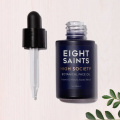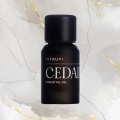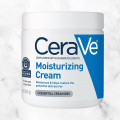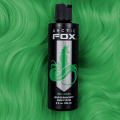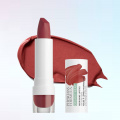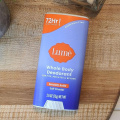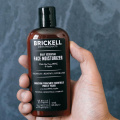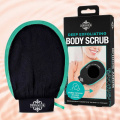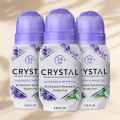How to Take Care of Long Hair: Tips to Flaunt Lustrous Tresses
Learn how to take care of long hair with our extensively researched guide. Here, we discuss tips, products, and therapies to care for your long locks.
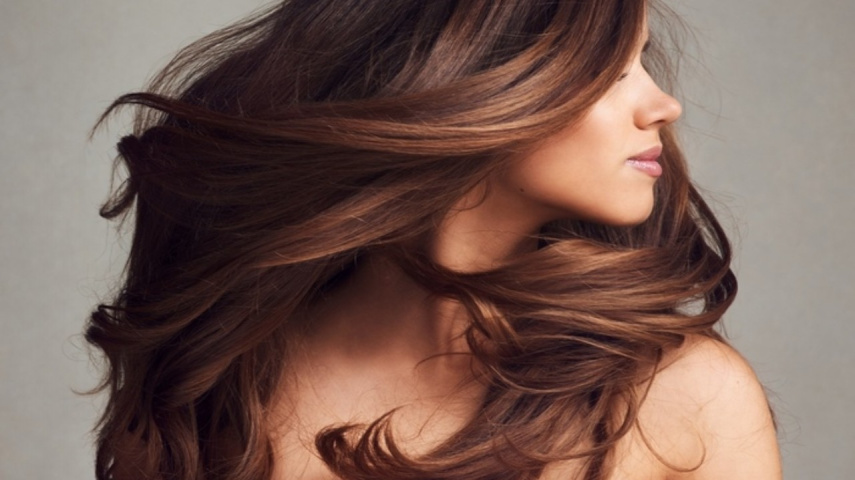
We know what it takes to achieve that dreamy length of hair. So, let us help you in your journey to maintaining that length in this article where we discuss “how to take care of long hair”. When you have long locks, you have to address various issues such as hair thinning, split ends, dryness, and more for it to look beautiful, healthy, and shiny. Therefore, they need unique hair care solutions because the longer your hair is, the further it gets from the scalp, thus getting less and less nourishing natural oils that it produces to keep it hydrated and healthy.
Therefore, in this article, along with various tips to care for your hair throughout the day and night, we are also set to provide guidance on certain natural remedies to enhance the shine and health of your hair. From getting regular trims and proper washes to changing diets and incorporating physical activities, all of these play an important part in helping you flaunt your flowy mane. So, why wait? Let us quickly dive into the world of hair care for you to make an informed choice.
13 Tips to Know on How to Take Care of Long Hair
Maintaining long tresses is surely a difficult task, but the pain is worth looking at your long, thick and shiny hair every day. So, say goodbye to your worries and dive into the 13 simple tips on how to take care of long hair mentioned below:
- Get Regular Trims: The solution to regularly trimming your hair might sound confusing because your goal is to maintain your long tresses. However, trust us, it is not counterproductive, rather trimming your hair every 6-8 weeks will ensure your hair looks healthier and does not stop growing in length. Hair, especially long hair tends to get drier at the ends because it does not receive the natural oils produced on the scalp making them prone to split ends. Split ends are common hair issues that make the hair look dull and also retards the growth. So, regular visits to your hair stylists for trims will remove split ends, maintain even and healthy hair growth, and prevent damage from spreading up the hair shaft.
- Wash it Gently: Washing your hair gently is essential for maintaining its health and beauty. Choosing a shampoo, gently massage into your scalp with your fingertips, not your nails, to cleanse it and remove excess oils and buildup. Rinse thoroughly with water until no residue remains. This is because wet hair is proven to have lower strength as compared to dry hair, so wet hair should not be vigorously rubbed while washing. (1)
- Use the Right Hairbrush: It might seem like a good idea to skip brushing your hair or do it quickly without much care. But, it's not going to be a healthy practice in the long run as rough brushing may lead to breakage and split ends. Brushing your hair acts like a scalp massage, which is essential to promote better blood circulation and distribution of natural hair oils throughout the lengths to maintain strong and healthy hair. Therefore, since you've put in a lot of effort to grow your beautiful long hair, take some extra time to brush it gently. While doing so, make sure to pick the right brush for your hair type. If you have long, straight hair, consider using a wide-tooth comb, boar bristle brush, or a Paddle brush. These brushes do not tease the hair while preventing tangles and can make your hair shinier.
- Hydrate Regularly: Water keeps your hair healthy from the inside out as it nourishes each strand internally, giving energy to hair cells that make new hair. It also cleans out toxins and chemicals in the hair follicles and blood that can make you lose hair. If you don't consume enough water, your scalp can get dry, leading to hair shrinkage (2). So, drink lots of water and keep yourself well hydrated to achieve happy and strong hair and scalp.
- Use a Heat Protectant: Typically one should let their hair air dry whenever possible. But if you need instant styling, you should use a heat protectant. This is because it will act as a shield for your hair strands before they are subjected to hot tools like hair dryers, curling irons, or straighteners. It's like wearing sunscreen to protect your skin from the sun's heat. The heat protectant forms a barrier on your hair, keeping it safe from the high temperatures of styling tools. This way, your hair stays healthy, shiny, and less likely to get damaged or frizzy when you use heat on it.
- Minimal Product Usage: You may come across way too many products in the market making promises to keep your hair healthy, shiny, strong, and whatnot. While these may be effective, there is also a downside to using too many products such as buildup, pH imbalance, over-stripping, etc. So, use minimal hair styling products and mild shampoos and conditioners to avoid greasy hair and reduce the buildup of residue on your hair, help it breathe, and stay healthy.
- Use Non-pulling Hair Accessories: Using non-pulling accessories is essential for maintaining the health and integrity of your hair. As using tight and pulling hair bands may lead to hair fall, and damage scalp health, and long-term effects may even lead to traction alopecia (3). There are gentle hairbands designed to secure your strands without pulling the hair from root and causing breakage or damage. You may also use silk or satin hair accessories, such as scrunchies or pillowcases, to minimize friction and prevent hair breakage and tangling.
- Use Soft Fabrics for Drying: Wet hair is weaker in nature and is more susceptible to damage (1). Therefore, ditch those heavy-duty towels and stack up your wardrobe with gentle microfiber hair towels, hair wrap, or old t-shirts. To use these microfiber towels, first gently drain out the excess water from your hair and then pat dry the lengths and the roots. These materials do not have bigger-sized fibers thus causing lesser friction which in turn leads to less damage to the hair shaft.
- Dry Your Hair the Right Way: Whenever possible, allow your hair to air dry naturally instead of using heat-based drying methods. This reduces the risk of heat-related damage and frizz. However, if you are in a rush and need to quickly get your hair done, ensure to use a hair dryer on its low-heat setting for hair drying. You should also keep in mind to point the nozzle downwards while drying your hair and not sideways.
- Detangle With Care: Once you have dried your hair using a microfiber towel generously spray a leave-in serum or conditioner before while it's still damp. Later, after it dries, use a wide-toothed comb and gently detangle your hair in small sections. You may also apply a few drops of serum or oil to help with the process to minimize friction on your hair.
- Pamper it With Hair Masks: Pampering your hair with hair masks every once or twice a week is a satisfying and effective way to rejuvenate and nourish your locks. Hair masks, enriched with natural ingredients and specialized formulas, provide deep conditioning and repair benefits. They can address various hair concerns, from dryness and damage to frizz and lack of shine. Therefore, using a hair mask instead of your regular conditioner once or twice a month will help prevent dryness and may repair damaged hair resulting in softer, glossier, and healthier hair.
- Protect it from UV exposure: Excessive UV exposure can make the hair shaft weaker and brittle. This is because UV rays are shown to induce hair protein, especially keratin loss. Keratin is the primary structural protein of hair that gives its physical properties (4). Therefore, use UV protection hair products or wear a hat to shield your hair from the sun's damaging rays.
- Cold Rinse: Hot water is not a very suitable option to wash your hair as it can dry out your scalp and weaken your hair roots, making the hair frizzy. Additionally, hot water can make your hair too porous, increasing the risk of breakage. Therefore, wash your hair with cold water or finish your shower with a cold water rinse after a warm water shower to seal the hair cuticles and add shine.
- Use Suitable Products: Using suitable and non-stripping devoid of too many harsh chemicals is the key to maintaining and caring for long hair. Therefore, opt for a mild, sulfate-free shampoo to cleanse your long hair. Avoid over-shampooing, as it can strip natural oils, leaving your hair dry and brittle. Always choose a good quality conditioner to keep your long locks well-hydrated and easy to manage. Concentrate on applying it to the ends, where your hair tends to be drier.
How Do You Maintain Long Hair Naturally?
Along with the above tips, you may also inculcate certain lifestyle changes and incorporate natural hair care routines to maintain long hair naturally. Some of the ways you may do so are as follows:
- Balanced Diet: The food you eat has an important role to play in maintaining overall hair health. Eating a balanced diet rich in vitamins, minerals, and protein makes you internally healthy, thus promoting hair growth and maintaining its strength and shine (5).
- Healthy Sleep Pattern: A disturbed sleep pattern induces a lot of stress on the body and mind (6). This leads to the release of stress hormones like cortisol which has been observed to be linked with hair biology. Moreover, studies done on the human population show that stress can change the immune response and lead to hair loss and physiological changes in hair. Therefore, a healthy sleep pattern is essential to maintaining long hair (7).
- Stress Management: Along with lack of sleep, there may be other stressors in a day to day life such as work, relationships, deadlines, studies, etc. Therefore, one may follow stress management methods such as meditation, regular exercises, journaling, yoga, etc. as high stress levels can contribute to hair issues like shedding and breakage (7).
- Natural Remedies: Experiment with natural remedies like hair masks made from ingredients like coconut oil, honey, or aloe vera. These natural hair treatments help to nourish and strengthen your hair.
Overnight Tips to Care for Long Hair
Hair quality can be enhanced by taking extra care during the night while sleeping. This is because the care taken throughout the day might not protect the hair from the friction and the pull that may be caused by constant contact with the fibers of your pillowcases, bedsheets, etc. Moreover, dirty bedding may also contribute to scalp issues which may in turn prevent hair growth. Therefore, some overnight tips to care for long hair are:
- Protective Hairstyles: Before going to bed, consider gently braiding your long hair. This not only helps prevent tangling but also reduces friction between your hair and the pillowcase, minimizing the risk of breakage. Loose braids work best to avoid stressing your hair.
- Silk or Satin Pillowcases: Invest in a silk or satin pillowcase. Unlike cotton, these materials create less friction, which means your hair is less likely to get tangled or frizzy while you sleep. This simple change can help preserve the smoothness and shine of your long locks.
- Hair Wrap or Caps: Alternatively, you can use a silk or satin hair wrap or cap to protect your hair. These accessories keep your hair contained and shielded from friction. Choose one that feels comfortable to wear and secures your hair gently.
- Apply a Leave-in Conditioner: Applying a small amount of leave-in conditioner to the ends of your hair can provide overnight moisture and prevent split ends. Focus on the tips, as they tend to be drier and more prone to damage.
- Avoid Tight Hair Accessories: Refrain from using tight hair ties or accessories before bedtime, as they can cause tension and breakage. Opt for soft, fabric-covered hairbands or scrunchies that won't pull on your hair.
- Clean Bedding: Ensure your pillowcases and sheets are clean. Clean bedding helps prevent the accumulation of oils, dirt, and product residue that can transfer to your hair and potentially lead to issues like acne or scalp irritation.
- Avoid Sleeping With Wet Hair: Try to avoid going to bed with wet hair right before bedtime because wet hair can be more susceptible to breakage. Therefore, allow your hair to air dry naturally before going to bed or wash your hair during the daytime.
Conclusion:
To care for long hair you must enhance your daily hair care routine as they are more prone to dullness and damage. Therefore, in our guide on how to take care of long hair, we specifically addressed various ways one can achieve healthy long hair. The overall tips included a gentle washing routine, regular trimming, using satin hair accessories, applying deep conditioners, etc. While these protect the hair throughout the day, one must also consider the damage it may bear overnight due to constant friction with the fibers of the bedsheets and pillowcases. Therefore, it is essential to cover your head with a satin or silk cap or use silk pillowcases, tie the hair in a loose braid, etc. Since, hair is regulated by many internal factors like food, blood quality, and the amount of blood circulated around the follicles, one must also undertake effective lifestyle changes to enhance overall hair health.
ALSO READ: Surprising Benefits of Green Leafy Spinach for Hair Growth





 JOIN OUR WHATSAPP CHANNEL
JOIN OUR WHATSAPP CHANNEL



































